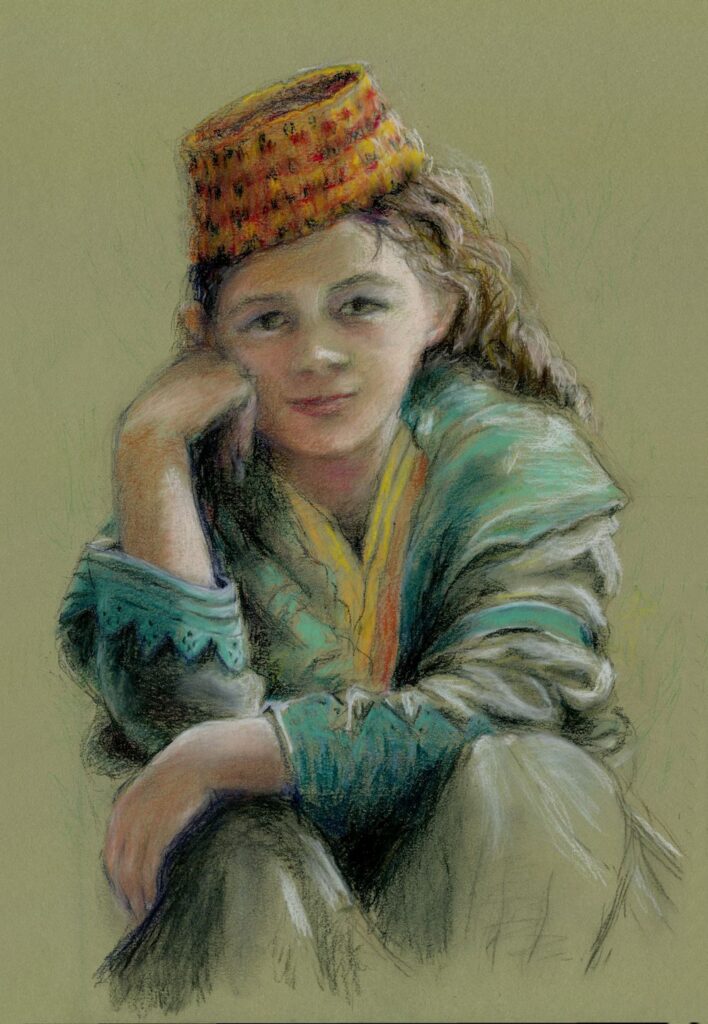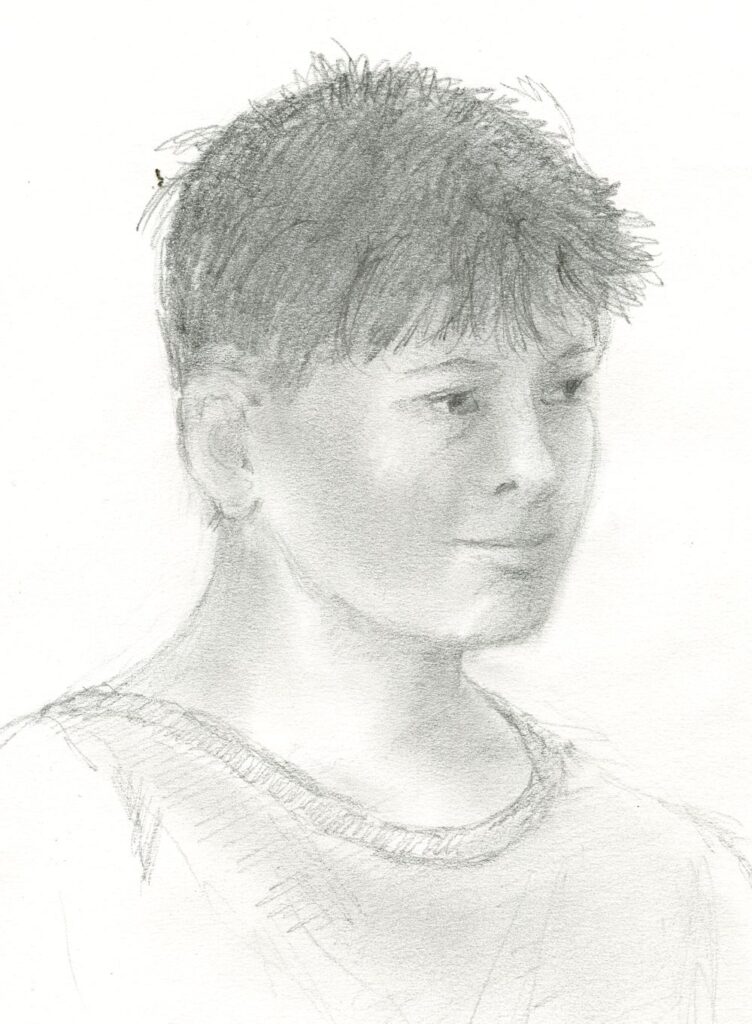Monthly Archives: July 2022
Portraits of Older Children: Week 6
July 20, 2022
In this final week, after reviewing the work it would be good to finish any outstanding projects, complete last week’s portrait or start a new portrait with more than head and shoulders.
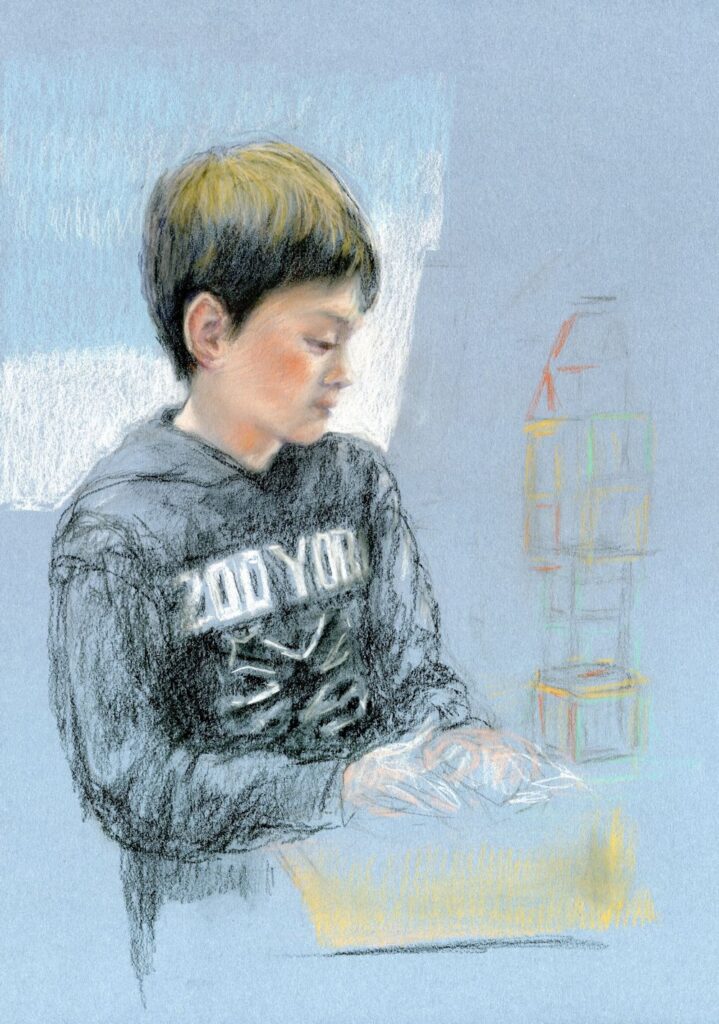
Charcoal and pastel pencil by Jo
Here the hands have been very freely sketched in. I am still deciding whether to work further on them or leave them suggesting movement. I may add a few more of the magnetic building blocks in the foreground instead.
You may like to work a portrait of a child engaged with a particular activity or in costume for a school play. If so aim to include some relevant objects. We haven’t talked much about backgrounds but look how effective it is to use the background colour and tone as part of the composition as in Toby at 9.
If you attempt a full length portrait you may like to work at a larger scale.
With the standing figure remember that the neck is always directly above the foot which is bearing most of the weight and central if the load is being equally shared by both feet. It can be useful to use a grid as last week or especially in the case of a standing figure drop a vertical on your reference and your support and measure heights and widths from that.
Your Paintings:
Portraits of Older Children: Week 5
July 13, 2022
This week you may like to work a profile view or include more of the figure.
First, a recap on useful mixes for flesh tones from a basic palette:
Two earth colours that are useful both for skin tones and hair are Burnt Sienna and Burnt Umber.
Burnt Umber makes great darks when mixed with Ultramarine Blue. When mixed with varying amounts of primary colours and white a great variety of skin colours can be mixed using Burnt Sienna and for darker complexions with Burnt Umber. A few of these mixes are illustrated below:
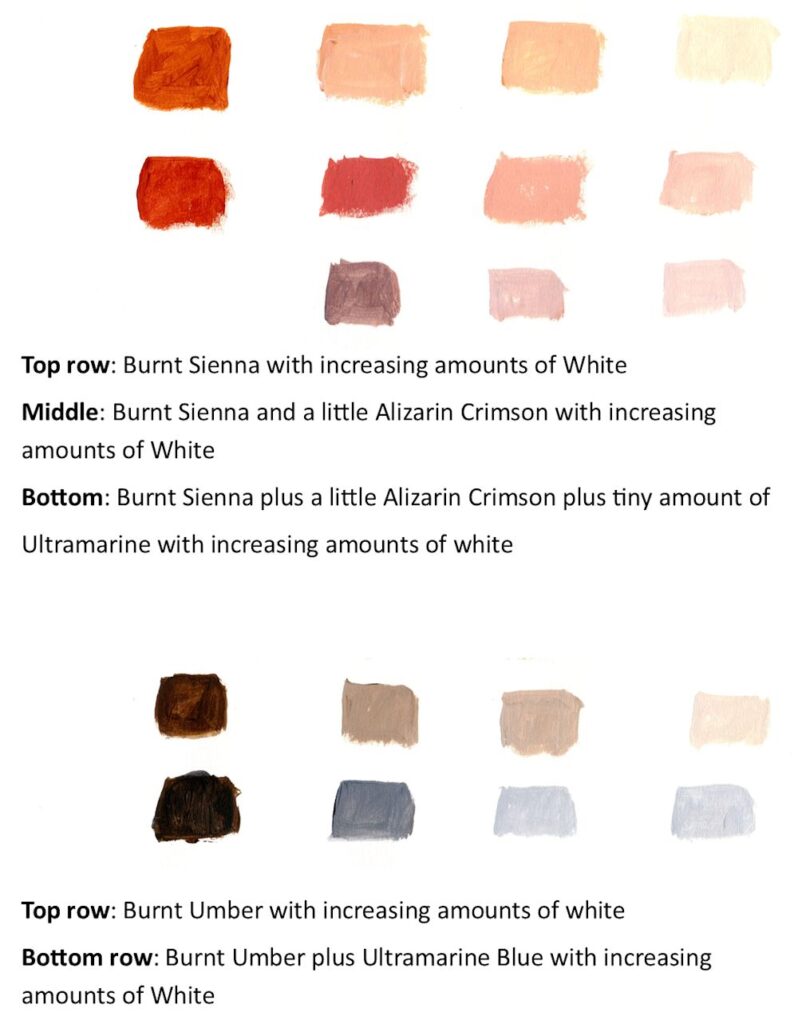
Try mixing other combinations of primary colours with Burnt Sienna and Burnt Umber and you will be able to make lively muted and coloured grays for shadow areas as well as much warmer and cooler skin colours.
In a way the above is a short cut as similar colours can be mixed from primary colours.
Below is a tiny sample of some of the colours that can be made with Alizarin Crimson, Ultramarine Blue and a pale yellow like Cadmium Yellow Pale or similar.
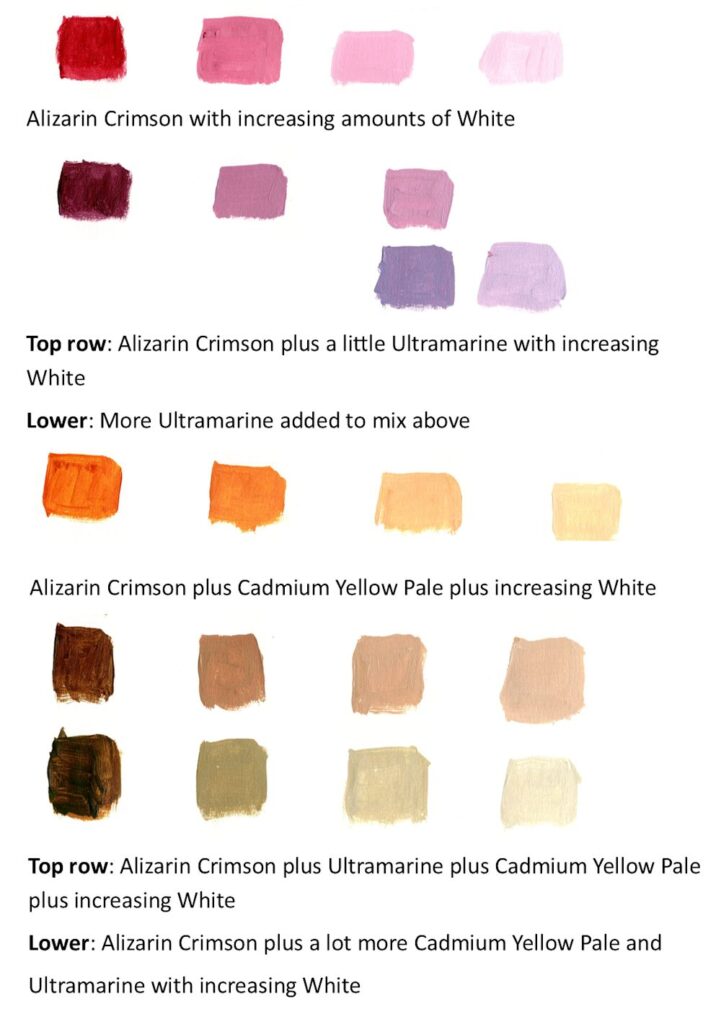
By adjusting the amounts of each pigment you can mix suitable skin colours just from these three plus white. Skin is NOT always a “flesh tint” hue; in the shadows you will find muted purples, greens and blues and coloured greys. As a general rule paint the mid tone areas first then at least one of the darkest and one of the palest areas to set the range of tones within which you are going to work. Also as with drawing, work on the largest shapes first before moving on to the detail.
This week’s challenge:
Arms and the way a person sits can reveal a lot of their character. With the head studies so far we generally included the shoulders and looked at their relation to the neck and head. This week we may include arms and shock horror, hands which I know are generally believed to be difficult. Well they are complicated and they are a challenge for everyone but one that can be overcome by understanding their structure. Also hands do not always need to be depicted in great detail. Sometimes all that is needed is an indication of their general form as revealed by the light.
If you can look at how arms and hands are depicted by other artists. Some examples are on one of my Pinterest boards, link below:
https://www.pinterest.co.uk/jhall1282/portraits/older-children-portraits-including-hands/
Perhaps try drawing your own hand to familiarise yourself with the way in which the finger joints and finger ends lie on a curve. Sit yourself in front of a mirror and observe how your shoulders and arms look when you have your hands on your knees, when one hand clasps the other in your lap, and when you fold your arms, and any other natural looking pose you can think of. If possible do a few quick sketchbook studies of the way your own head, shoulders arms and hands arrange themselves in these various positions.
I know you are not the same as a 9 to 14 year old BUT this will help you look at your reference photograph in a constructive way.
Below are two photos of children; look at them objectively in the same way, relating the sizes and angles of the various parts to each other. Then find a reference of your own and decide on how much you want to include in your portrait study and then work out the composition taking on board the structures and the lighting.
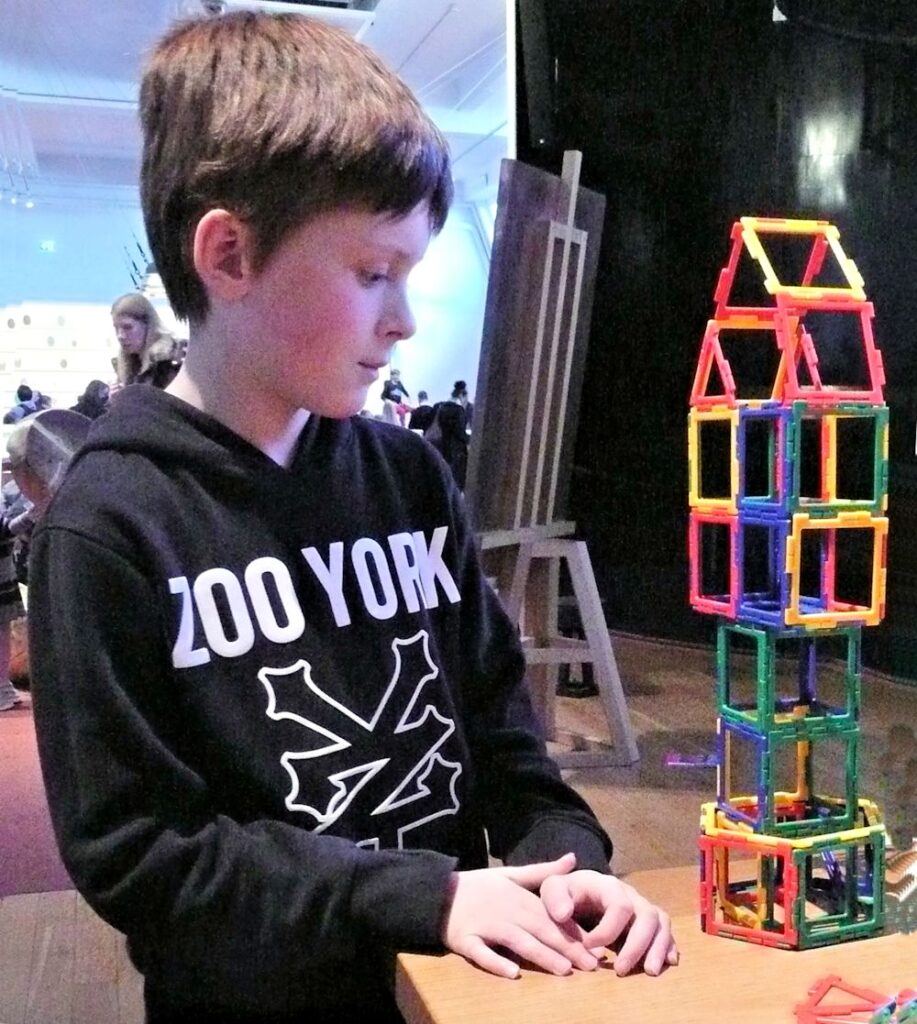
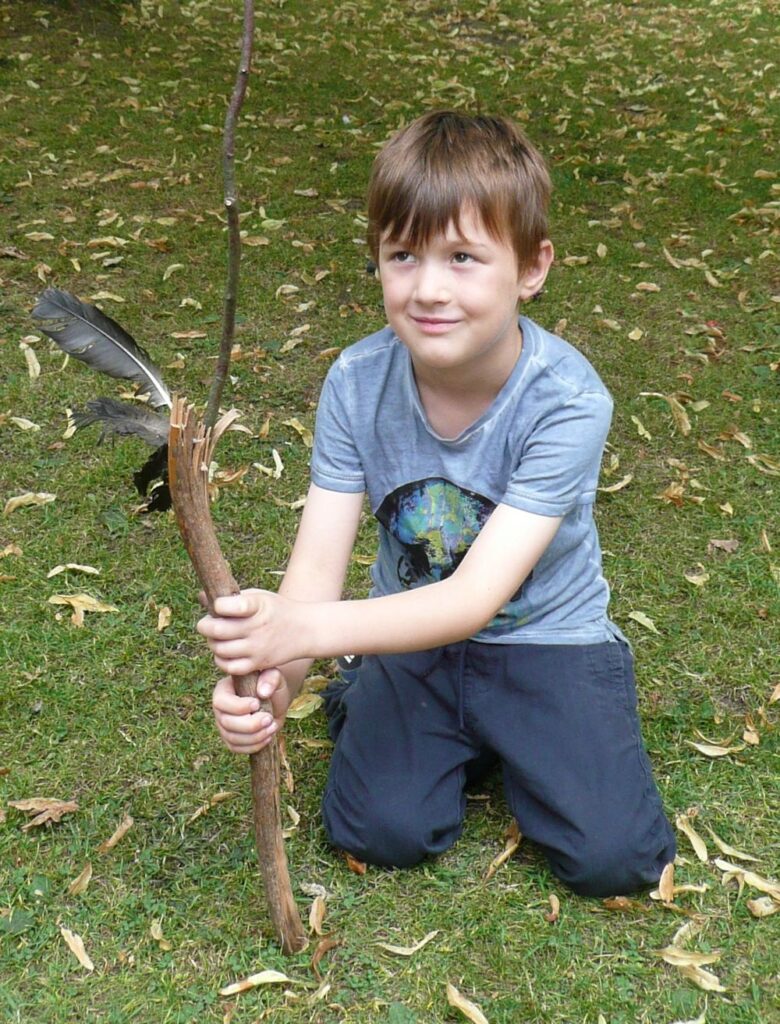
Think hard about the overall width and breadth of your figure; this will be very different in the case of standing and sitting figures. Make sure you plan the composition well and think about how the figure will be placed on the support. Similarly make sure that if you are transferring your photo reference to your support that the figure maintains the same aspect ratio i.e. the overall height and width of the figure in your reference is in the same proportion on the support.
You may like to use the grid method for this, even a simple four squares by three square grid drawn on the reference and a larger grid drawn in the same proportion on the support will help and allow you to check angles and lengths especially in complicated poses.
On your canvas or board either
1.Mark out the main lines of the composition and then work in paint or pastel
or
2.Make a tonal study in paint this week to which thin glazes of colour can be used to finish the portrait next week.
Your drawings and paintings:
Portraits of Older Children: Week 4
July 7, 2022
This week we will look at faces of older children in three quarter view. This is a different challenge as most of the front of the face can be seen but of course a lot of the side too.
If you have time practise drawing a few heads in three quarter view, and then mark out the board with a few useful lines ready to paint in pastel or acrylic.
Drawing a three quarter view; a few considerations
Try starting by getting the general head shape right and marking its relation to the neck and shoulders.
Make sure you get the overall width and height of your head correct and the width of the shoulders which are usually narrower than adult shoulders. Place the jaw line and suggest the position of the ear which you may have to adjust so go gently.
The features of the face can be thought of as lying on a curved plane on the front of the head. The sides of the head can be thought of as beginning where the forehead changes direction going back towards the ears. The visible width of this will vary enormously depending on whether the view is nearer to full face or nearer to profile.
Next try placing the features noting how the eyes are very different in shape than when seen full face. It will still help to put a feint construction line through them. The features lie symmetrically (more or less) on a slight curve rather than about a straight line as in the the full face view. Again it may be helpful to mark this faintly. The nose will project beyond this line i. e. stick out more!
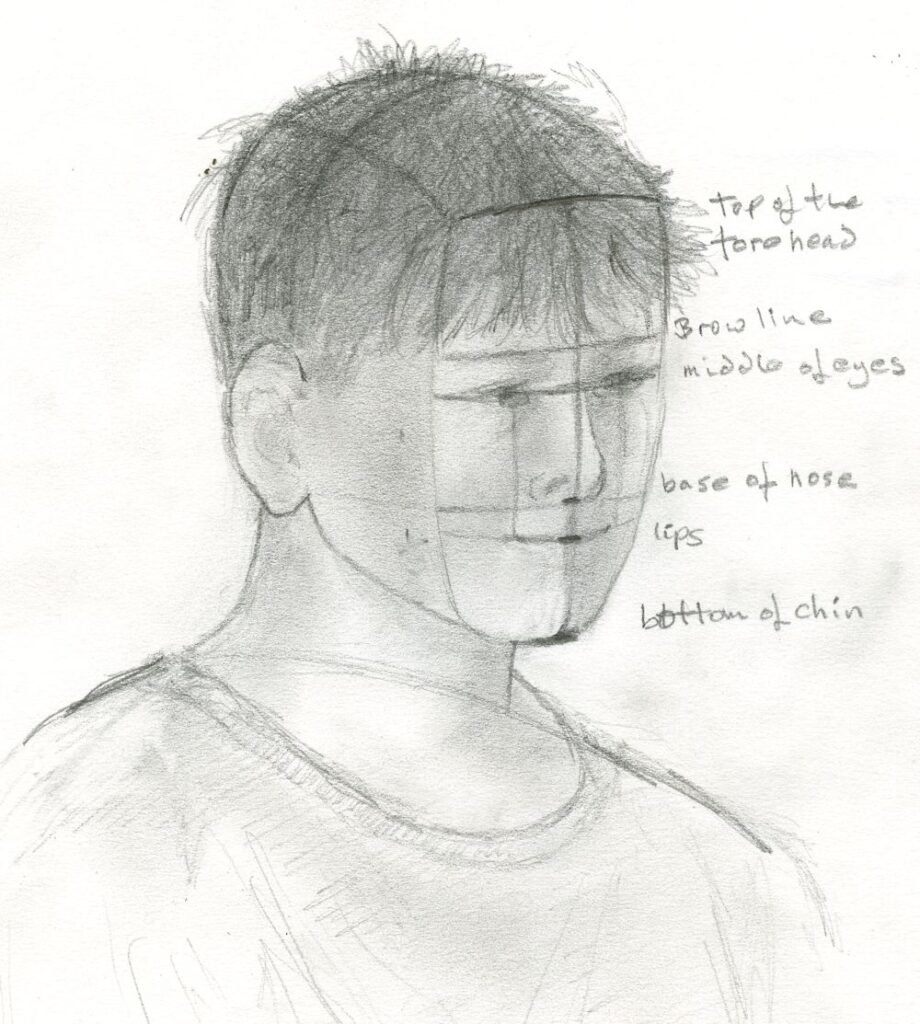
Other useful markers are the base of the nose, the distance between the base of the nose and the upper lip and the distance from the base of the nose to the tip of the chin so measure and mark them. Then mass in the hair and Toby has masses of it! Then go back refine the shapes and show the form by hatching or shading all the toned areas you can see.
Some people like to think of the face as divided into three (approximately) equal parts; chin to base of nose, base of nose to brow line and brow line to the top of the forehead. Always remember to look though, as it is the small differences that make us unique!
Really looking is the most important way, but your looking should always be questioning; widths; angles; relative sizes; tones and of course colour. Have fun with the drawing and then enjoy the painting!
Your drawings and paintings:
